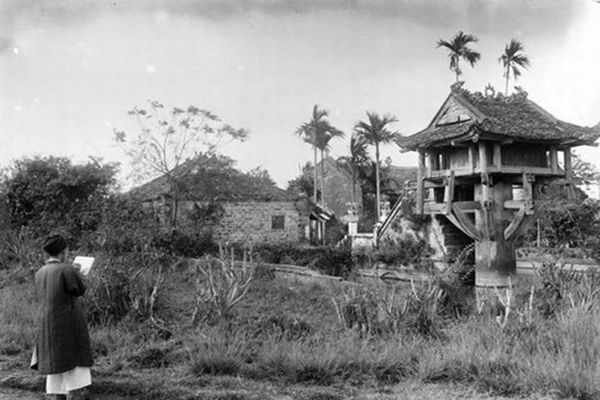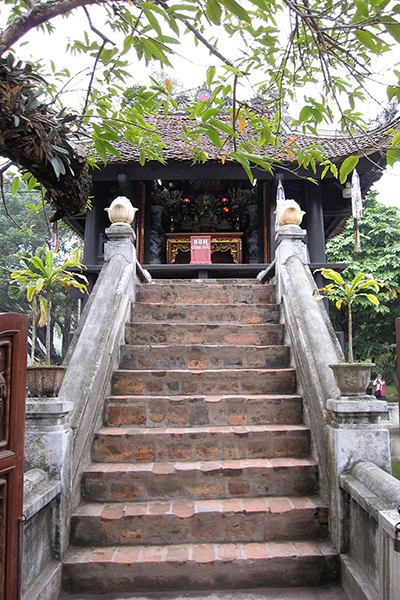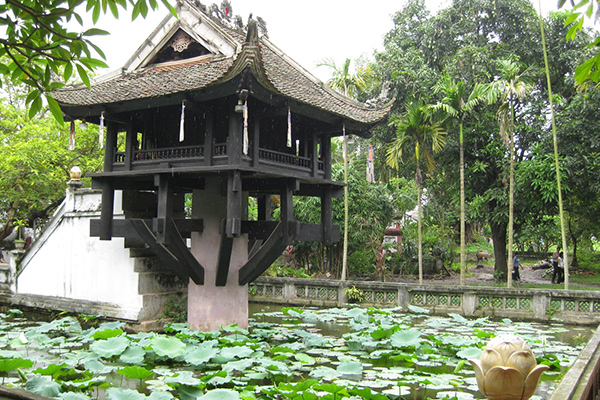One Pillar Pagoda is one of the symbols of the capital. It is famous for its unique architecture as a stylized lotus rising from the water. It is always a worth-visit destination for both domestic and international tourists.


One Pillar Pagoda, also known as Dien Huu Pagoda (lasting happiness) or Lotus Pagoda was built under the order of King Ly Thai Tong in 1049.
According to the legend, the pagoda was built to reappear the strange dream of King Ly Thai Tong. The pagoda was made of wood and located on a single pillar.
The pagoda has experienced a lot of vicissitudes of the history and been restored many times. In 1955, it was restored and maintained until now.
In 1962, One Pillar Pagoda was recognized as a National Historic Site. In 2012, the Asian Record Organization recognized as the pagoda with the most unique architecture in Asia.
One Pillar Pagoda is like a giant lotus rising from the water. The temple has a square shape, inside there is a Guanyin statue.
The most unique thing of One Pillar Pagoda is that it was built on a 4-metre stone pillar (not including the underwater), with a diameter of 1.2 m including two stone blocks overlaying into a closely fitting cylinder, hard to realize with eyes, the above stone block has woods playing the role of racks of the pagoda.
The pond below is surrounded by a brick railing. In the garden there is a lush bodhi tree from the land of Buddha which was donated by President Rajendra Prasad on the occasion of President Ho Chi Minh visited India in 1958.

In addition, One Pillar Pagoda is also a work with a high aesthetics, reflected through the visual arts on the water, stone sculpture, painting, carving … representing ancient values, bearing strongly the spirit of the nation.


